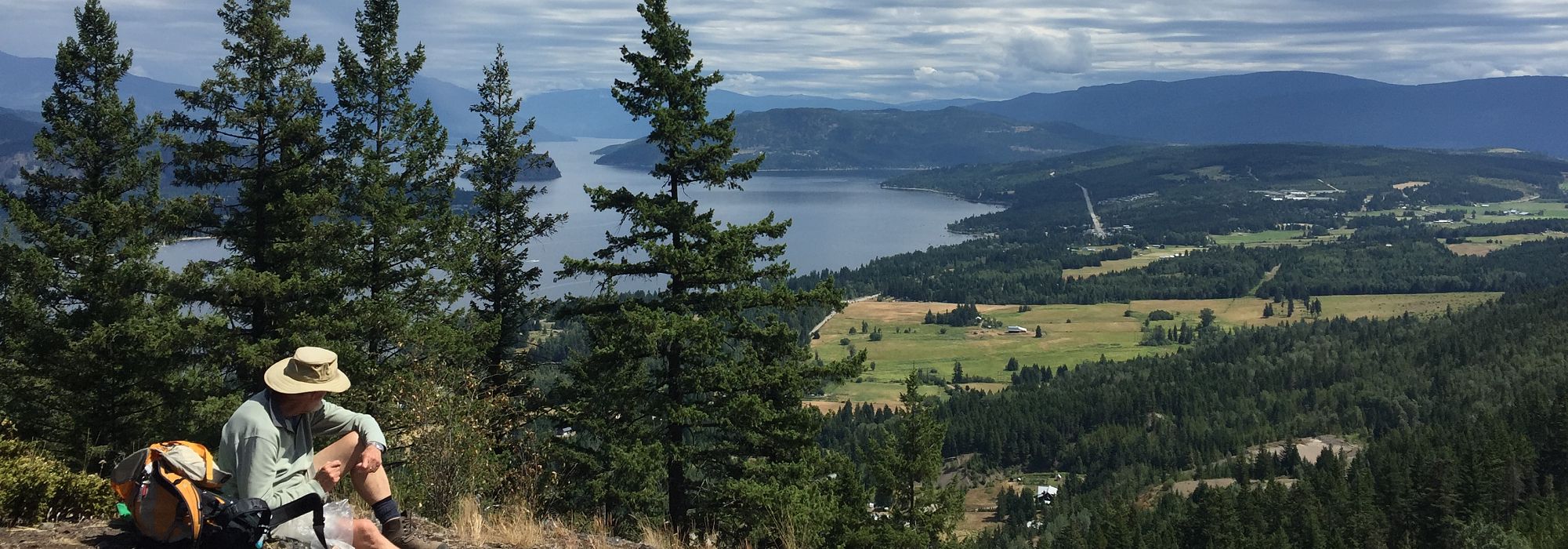Safety & Etiquette
Caution!
- Always go prepared and use your common sense
- Always tell someone when and where you are going
- Many trails are not maintained - use at your own risk
- Many trails are accessible only by active logging roads requiring 2-way radio communication, or deactivated logging roads requiring four-wheel drive or high-clearance vehicles.
- Watch for wildlife and avoid areas showing recent signs of black bears, grizzly bears and cougars.
- Before heading out, check with local contacts to make sure the trails and roads are safe.
Tips for Safety
- Bring applicable maps, along with a compass or GPS device.
- Wear appropriate footwear and clothing, and bring sufficient food and water.
- Carry identification (including name, phone number and pertinent medical information), and record your bicycle serial number
- Bring a portable phone or other communication device, along with pertinent phone numbers (ie. emergency numbers)
- Travel with a partner when possible
- Stay alert, be observant about your surroundings, avoid areas where visibility is poor, and don't wear headsets.
- Avoid unfamiliar areas when on the trails alone and follow your intuition about unfamiliar people.
- Trails are shared by a variety of users at the same time. Please be courteous to all users, and remember that pedestrians have the right-of-way. Stay to the right of the trails.
- Cyclists should pull off the trail when stopping, give a voice, bell, or horn warning when passing others, wear helmets and ride at reasonable speeds.
- Wear reflective material and carry a whistle or a noisemaker.
- Where pets are allowed, keep them on a leash and clean up after them.
The Shuswap Trail Alliance assumes no responsibility for the safety of any persons, animals or equipment when using the trails listed in this website. Use at your own risk.
Technical Difficulty
RSTBC Trail Rating System
Pro Line
Designed for professional mountain bikers and amateurs riders of exceptional skill. Not intended for the public. Extremely high risk level
Expert Unlimited
Exceptional bike control skills and balance essential to clear many challenging obstacles. High-risk level.
Most Difficult
A mixture of long steep climbs, loose trail surfaces, numerous difficult obstacles to avoid or jump over, drop-offs and sharp corners. Some sections are definitely easier to walk
More Difficult
Challenging riding with steep slopes and/or obstacles, possibly on a narrow trail with poor traction. Requires riding experience
Easier
Gentle climbs and easily avoidable obstacles such as rocks, roots and pot-holes
Easiest
Fairly flat, wide and paved. Suitable for all users
Rules of the Trail
The way you hike, bike, or ride today shapes the trail access for tomorrow.
Do your part to preserve and enhance by observing the following rules of the trail. These rules are recognized around the world as the standard code of conduct for trail users.
1. Ride On Open Trails Only.
Respect trail and road closures (ask if uncertain); avoid trespassing on private land; obtain permits or other authorization as may be required. The way you use the trails will influence trail management decisions and policies.
2. Leave No Trace.
Be sensitive to the dirt beneath you. Recognize different types of soils and trail construction. Wet and muddy trails are more vulnerable to damage. This also means staying on existing trails and not creating new ones. Don’t cut switchbacks. Be sure to pack out at least as much as you pack in.
3. Control Your Vehicle!
Inattention for even a second can cause problems. Obey all speed regulations, guidelines and recommendations.
4. Always Yield Trail.
Let fellow trail users know you’re coming. A friendly greeting or bell is considerate and works well; don’t startle others. Show your respect when passing by slowing to a walking pace or even stopping. Anticipate other trail users around corners or in blind spots. Yielding means slow down, establish communication, be prepared to stop and pass safely.
5. Never Scare Animals.
All animals are startled by an unannounced approach, a sudden movement, or a loud noise. This can be dangerous for you, others, and the animals. Give animals extra room and time to adjust to you. When passing horses use special care and follow directions from the horseback riders (ask if uncertain). Running cattle and disturbing
6. Plan Ahead.
Know your equipment, your abilities, and the area in which you are traveling. Prepare accordingly. Be self-sufficient at all times, keep your equipment in good repair, and carry necessary supplies for changes in weather or other conditions.
Play-Clean-Go
Exploring Respectfully
Shuswap Trails
Fostering a healthy, engaged community in the Shuswap Region – economic/environmental/social – through well designed, maintained, and promoted trails connecting people, culture, and landscape


